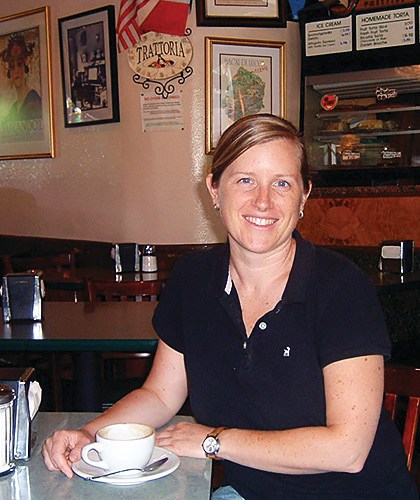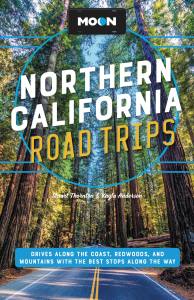Things to Do at Mount Shasta: Beyond Hiking
When I first caught sight of Mount Shasta, over the braided folds of the Sacramento Valley, I was fifty miles away and afoot, alone and weary. Yet all my blood turned to wine, and I have not been weary since.
John Muir, 1874
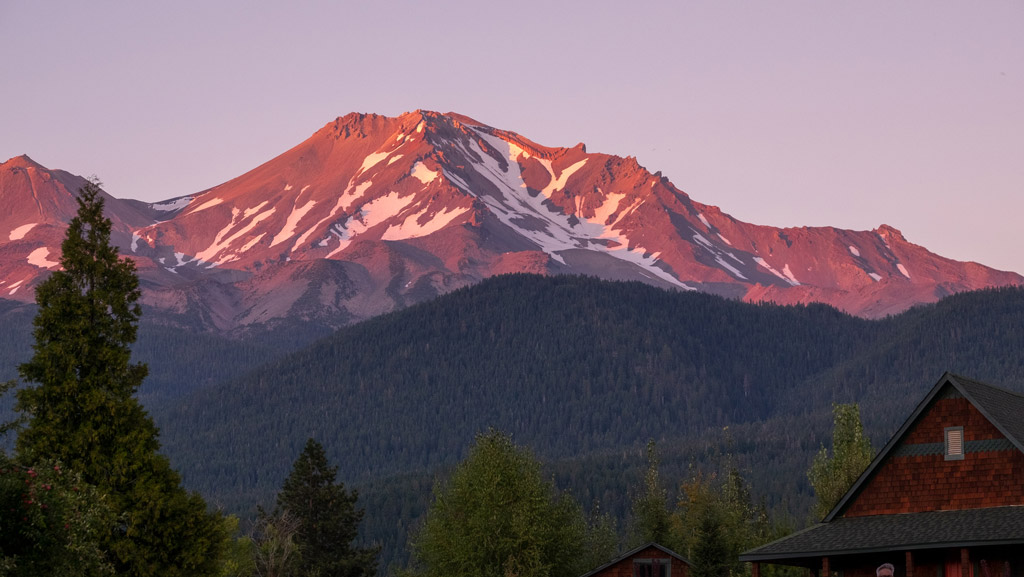
One of the most iconic natural formations in the United States, Mount Shasta is stunning from every angle at any time of day. Like Utah’s Delicate Arch or the Grand Canyon, Shasta is immediately recognizable from calendars, book covers, and photographs on the walls of hotels and restaurants—but you need to see it with your own eyes. Once you experience it in person, you’ll never forget it, and you’ll find yourself longing to see it again.
The gorgeous sunny village known as the City of Mount Shasta is a shining jewel of Northern California. A visit is a must for hikers, boaters, skiers, anglers, and others who revel in the outdoors.
Mount Shasta is a tremendous dormant volcano that last erupted in 1786. Although it may someday erupt again, for now it’s a delightful playground and a magnetic attraction. At 14,162 feet, Mount Shasta is the 49th highest peak in the country, the fifth highest in California, and the second tallest volcano in the Cascade Range. It has a 17-mile perimeter and stands pretty much alone, with no close neighbors of anywhere near similar stature. In winter, snow covers much of the mountain; in summer a series of glaciers make the mountain appear white and glistening.
Mount Shasta is covered with snow, at least in places, year-round. This makes it an appealing, if not always accessible, destination for skiers of all kinds. Some people like to go to the back side of the mountain (the “bowl”), climb as high as they can with skis strapped to their backpacks, and then ski down. Families with children can bring plastic sleds, hike a little less far up the mountain, and then let everyone sled down. The Bunny Flat Trailhead (6,900 feet) is recommended for this kind of activity.
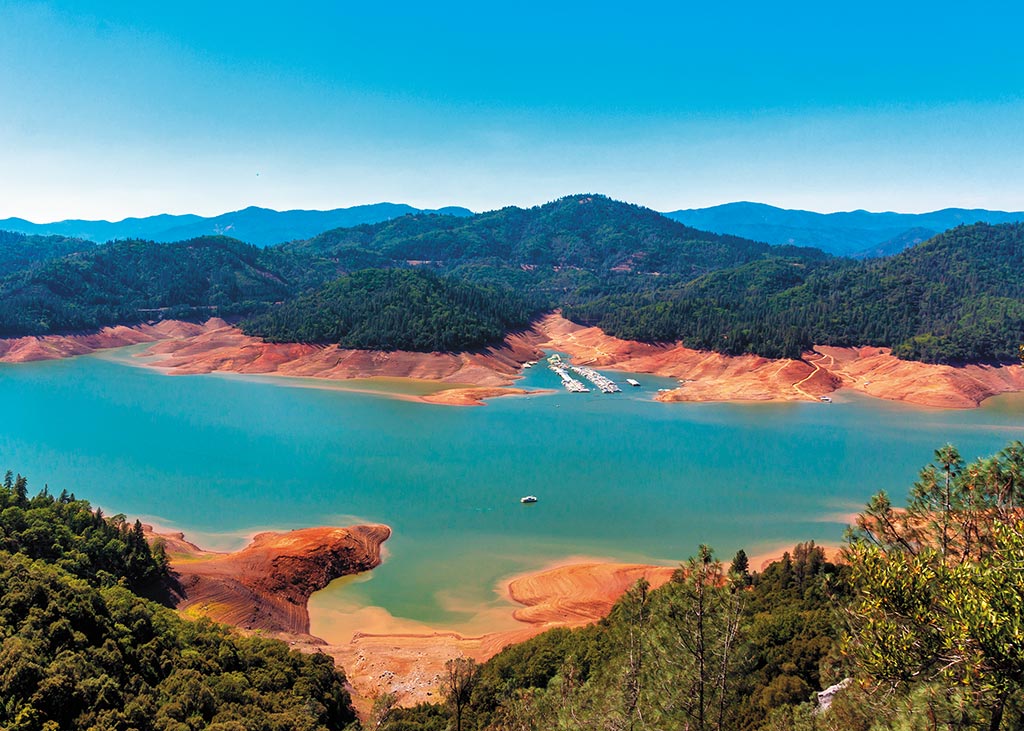
Fishing in the Mount Shasta Region
Almost all the major rivers and feeder streams running through the Mount Shasta region are open for fishing. You can tie your fly on and cast into the McCloud, Sacramento, and Trinity Rivers, among many others. These rivers carry salmon, steelhead, and trout. If you want a guide to help you navigate these waters, contact one of the many services that can take you out to the perfect fishing holes. For fly-fishing or scenic rafting tours, call Jack Trout International Fly Fishing Guide Service (530/926-4540, year-round, $325-400 for 2 people, gear rentals $25). Jack will take you out on the McCloud, Klamath, Upper and Lower Sacramento, Pit, or Trinity Rivers, or to Hat Creek. Jack supplies all the gear and brings a gourmet lunch complete with wine and homemade strawberry shortcake for you to enjoy by the side of the river. It you’re an expert fly-fisher who wants to improve your technique, he can help you. If you’ve never done it before but think you might like to try, give him a call—he loves beginners and says they always catch something. See his blog, complete with great photos, at www.mtshasta.com to help you visualize your fishing trip. You have to bring a California fishing license, available online at www.wildlife.ca.gov.
Outdoor Adventures Sport Fishing (530/221-6151 or 800/670-4448, year-round by appointment only, $175-600 pp/day) takes anglers on fly-fishing drift trips on the Sacramento and Trinity Rivers, where they specialize in salmon, trout, and steelhead; they’ll also guide you on a jet-boat trip on Shasta Lake, where you can catch salmon and trout.
Newsletter Signup
By clicking ‘Sign Up,’ I acknowledge that I have read and agree to Hachette Book Group’s Privacy Policy and Terms of Use
Rafting and Kayaking
In the Cascades, the best white-water rafting is definitely on the Trinity River. A good guide service to take you out onto this river is Trinity River Rafting (530/623-3033 or 800/307-4837, guided trips $65-180 per day, kayak rental $40 per day). In addition to its flagship runs on the Trinity, this major rafting company runs on the Klamath, Salmon, and Upper Fork Sacramento Rivers as well as Canyon Creek. Depending on where you’re staying and what level of rafting you can handle, you can choose the river to paddle. Half-day to three-day trips ($65-375) are available, and you can choose from a placid Class I-II float suitable for the whole family to a Class IV-V run for fit, experienced rafters only. Trinity Rafting also rents rafts and 1-2-person inflatable kayaks for paddlers who want to go off on their own.
Another major player in the northern mountains rafting scene is the Bigfoot Rafting Company (530/629-2263, $69-410). With day trips on the Trinity and Salmon Rivers, and multiday rafting campouts on the Trinity and Klamath Rivers, Bigfoot presents a depth of knowledge of the rivers it runs. Your guide will know a great deal about the history and natural surroundings of your chosen river, and as a bonus can cook you up fabulous meals on the full-day and multiday trips. Bigfoot also rents equipment.
Mount Shasta Skiing and Snowboarding
The snowpack on Mount Shasta each winter creates a haven for downhill skiers, cross-country skiers, snowboarders, and snowshoers. The place to go for all this is the Mount Shasta Ski Park (Ski Park Hwy., off Hwy. 89 between McCloud and Mount Shasta, 530/926-8600 or 530/926-8619, 9am-4pm daily mid-Dec.-mid-Apr., night skiing 3pm-8pm Thurs.-Sat., adults $20-55, ages 8-12 and seniors $12-33, under age 8 $7-13). This small but exciting downhill park has 425 skiable acres, three chairlifts, and two carpet lifts. Nearly half the runs are open for night skiing (if there’s enough snow) and the Marmot lift in the beginner area makes a perfect spot for beginners of all ages to gain their snow legs (at a fraction of the cost of the resorts at Lake Tahoe).
Half-day discount lift tickets and night-skiing-only lift tickets make skiing here even more attractive for snow-loving bargain hunters. Call ahead if you’re interested in night skiing (adults $20, youth and seniors $12, children $7); the park offers extended night skiing until 9pm on some holiday weekends, but sometimes doesn’t offer night skiing at all if snow conditions aren’t favorable.
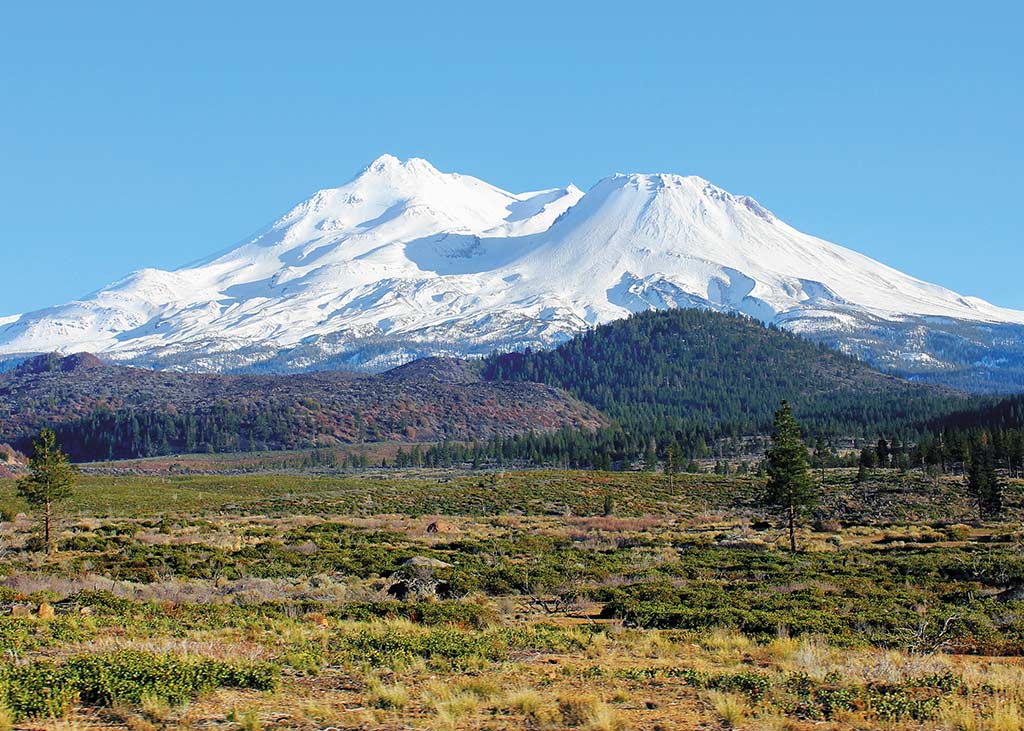
Cross-country skiers can also get their fix at the Mount Shasta Nordic Center (Ski Park Hwy., 1 mile before downhill park, 530/925-3495, 9am-4pm daily winter, adults $15, youth and seniors $8). Since 2006 this lovely ski center has been a not-for-profit organization dedicated to the promulgation of physical and mental health through cross-country skiing. It’s open for the winter season, as determined by when the snow comes, usually in late December, and closes in mid-April; the center is closed Tuesdays after Jan. 1.
The center has about 16 miles of groomed trails for cross-country skiing, and there’s ample backcountry where you’re welcome to explore off-trail. Snowshoers are allowed on the groomed trails as long as they stay to the side. Call the hotline (530/925-3495) for conditions and grooming updates. If you plan to come often, you can buy an annual membership, priced from $75 (individual) to $250 (family). Memberships and other donations are tax-deductible. The organization sponsors clinics, demos, races, and other events. Ski and snowshoe rentals and lessons are available.
Horseback Riding
The wilderness around Mount Shasta beckons to anyone with a penchant for trail rides. One good outfit that serves the area is the Rockin Maddy Ranch (11921 Cram Gulch Rd., Yreka, 530/340-2100, year-round, by reservation only, 1-2 hours $55-75 pp, full day $175 pp). Choose from rides like the popular 90-minute Shasta View ride, featuring grand vistas of the mountain, or a full-day excursion into the Marble Mountains. Rockin Maddy allows smaller children to ride double on the same horse. You can even book a pony party for your children, a horse-drawn carriage ride for a wedding or special event, or a hayride led by a team of powerful Percherons.
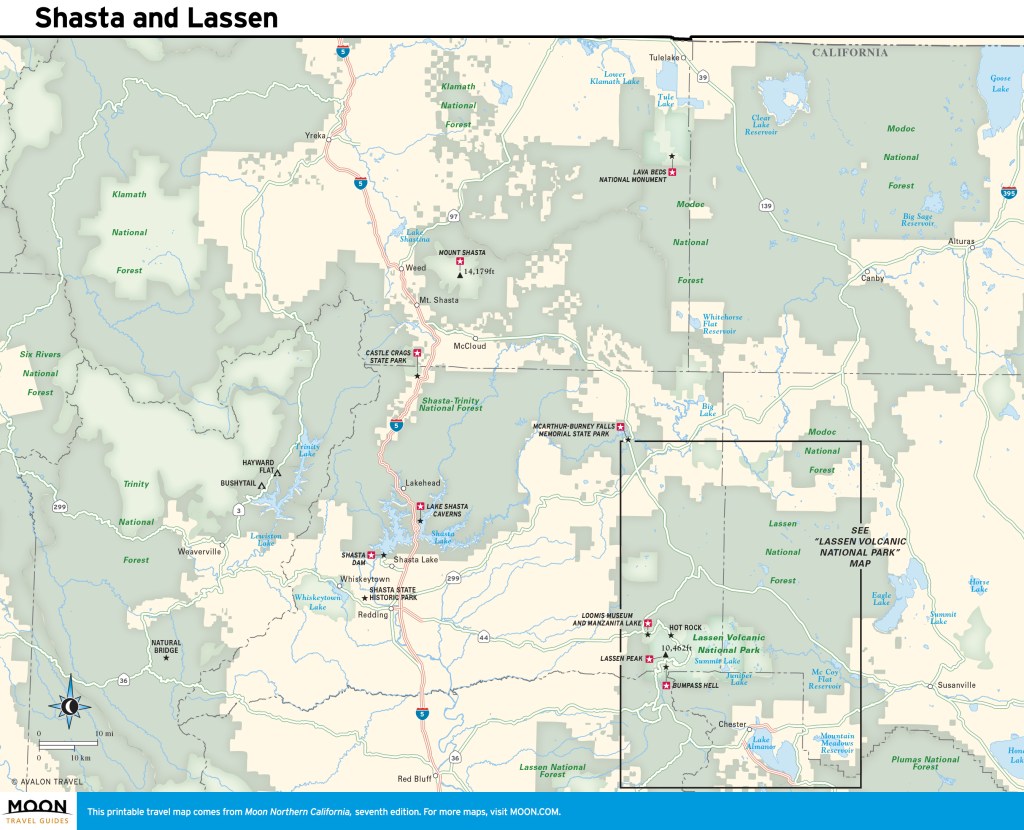
Newsletter Signup
By clicking ‘Sign Up,’ I acknowledge that I have read and agree to Hachette Book Group’s Privacy Policy and Terms of Use
Pin it for Later


